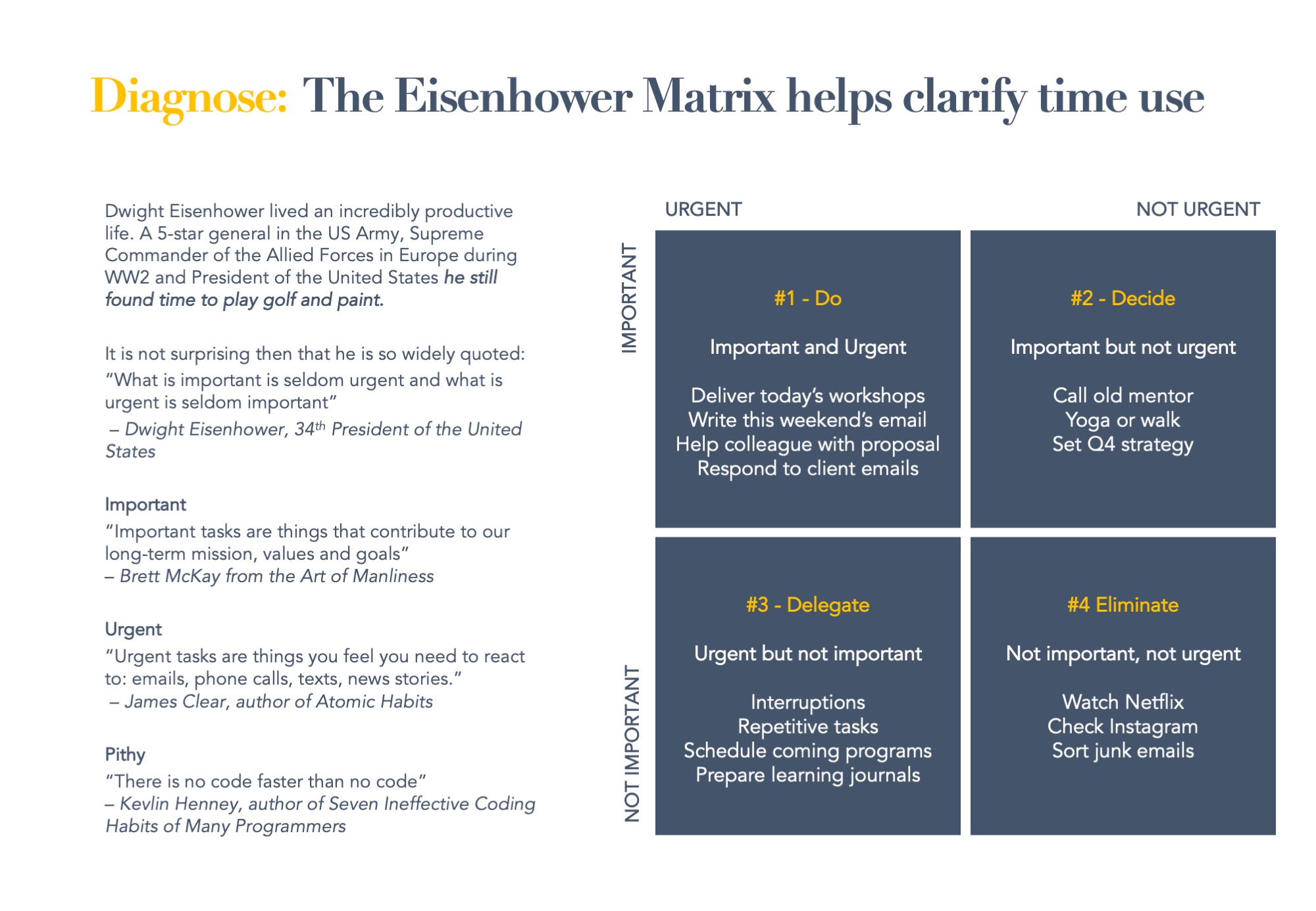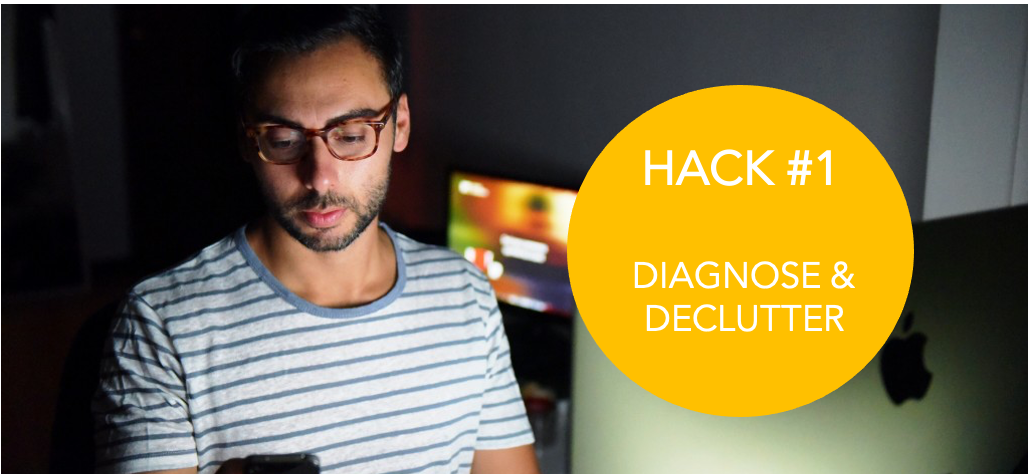I loved catching up with a Clarity First alum this week for at least two reasons:
#1 – I love hearing how a story we have worked on together lands, and
#2 – I also love it when they can teach me something practical that they have made work for themselves which will also help someone else
Steve rang me to tell me that a major strategy I had helped him develop a couple of years ago has now come to fruition. He got pretty much everything he had aimed for at the start.
We were both delighted.
Given I know him well, I also took advantage of the conversation to ask some questions that I thought he was well placed to answer.
He is not only head of the highly successful Australian arm of a global business, he has a family, works pretty regular hours and ‘knocks off' early on a Wednesday to go sailing.
He has plenty to offer many of my clients, especially a project manager from a technology company, who said this week:
I feel like I am running soooo fast just to deliver – how do I find time to be strategic as well?
So, how did he transition from being an engineer to becoming a strategic leader who takes nights and weekends off as well as going sailing most Wednesday afternoons?
Steve offered some practical hacks for those of us who want to deliver at a more strategic level while not working 24/7.
He said some of the best advice he was given as he moved into leadership was to take control of his time.
So, I have taken his advice and plan to hack my own schedule over the coming weeks to see if I can gain the same sorts of results.
At the moment, getting to yoga on a Wednesday morning would be a sign of success. I have cancelled the last three weeks running.
Let's work out if we can ‘hack our way' to becoming more strategic and get to some fun things outside of work at the same time.
Here is the roadmap for Steve's Hacks. I'll focus one one of these each week for the coming three weeks as I also work to optimise my own schedule and corresponding impact:
- Diagnose and declutter: Work out what I AM spending my time now and iteratively respond to my observations by getting rid of the less value adding stuff. By lunch time on day 1 I was stunned at the impact of recording and scoring my time.
- Prioritise: Work out what to do with the “number two's” … I will explain next week
- Optimise: Decide how to make the most of my time so I optimise my potential and the value I deliver while having room for things I enjoy in my life.
Let's get started.
Step 1 – Diagnose and declutter
So, this coming week, I will focus on diagnosing what I am doing now and start to declutter my activities. Here is how Steve suggested I do it:
- Read up on the Eisenhower Matrix (see below)
- Record what I am doing as if I were a consultant keeping a super simple timesheet (download my version here)
- Score each activity against the Eisenhower urgent / important Matrix
- Tally at the end of each week to see my daily and weekly averages
When interviewing Richard Medcalf of XQuadrant about ideas to help clients become more strategic, he also offered another simple idea. He recommends using a tool called RescueTime to monitor my activity.
It will check how I spend my time when at my computer, eg how much time on email, websites, Word / PowerPoint, etc. It has a 14-day free trial, so I have signed up to see if that gives me some useful information too.
So far as day one goes: it's cool. I am looking forward to shining some light on what tools I am using more and less of.
I'd love to hear how this helps you and will come back not only with Richard's interview but more thoughts over the coming weeks. Feel free to email me and share your experiences.
Talk soon,
Davina
PS If you don't normally receive my emails and want to keep up with the series, subscribe below.


PRESENTED BY DAVINA STANLEY
I love what I do.
I help senior leaders and their teams prepare high-quality papers and presentations in a fraction of the time.
This involves 'nailing' the message that will quickly engage decision makers in the required outcome.
I leverage 25+ years' experience including
- learning structured thinking techniques at McKinsey in Hong Kong in the mid 1990s before coaching and training their teams globally as a freelancer for a further 15 years
- being approved to teach the Pyramid Principle by Barbara Minto in 2009
- helping CEOs, C-suite leaders and their reports deeply understand their stakeholder needs and communicate accordingly
- seeing leaders cut the number of times they review major papers by ~30% and teams cut the amount of time they take to prepare major papers by ~20%*
- watching senior meetings focus on substantive discussions and better decisions rather than trying to clarify the issue
My approach helps anyone who needs to engage senior leaders and Boards.
Recent clients include 7Eleven, KPMG, Mercer, Meta, Woolworths.
Learn more at www.clarityfirstprogram.com
(*) Numbers are based on 2023 client benchmarking results.


